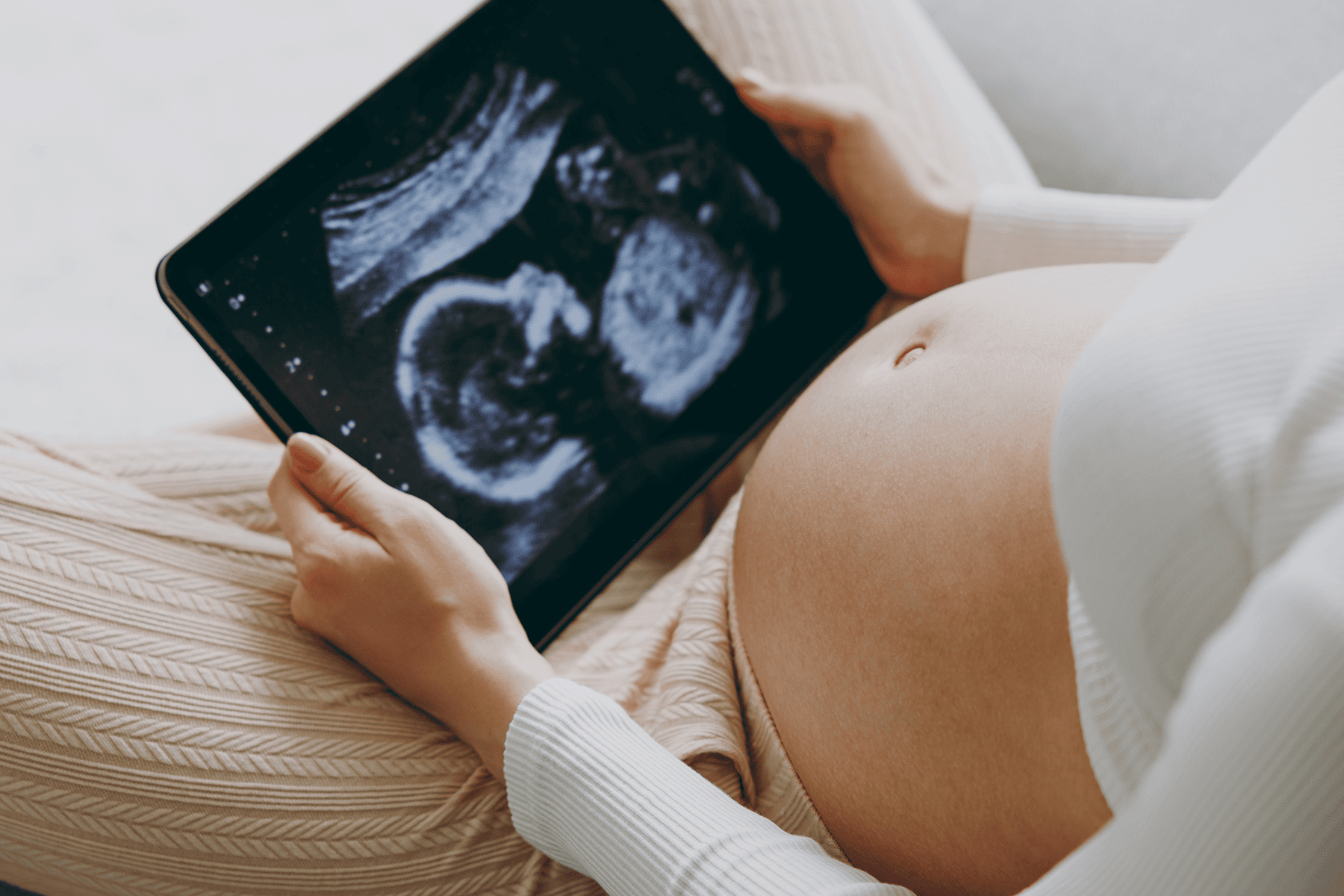Call Today: 312.883.6907
Chicago Birth Injury Lawyer
Did your child or family member experience a birth injury? A birth injury can be traumatic and result in severe consequences. Working with Chicago Medical Malpractice Lawyers is the first step towards getting compensation for your pain.
We’ll work with you to assess your case and the circumstances surrounding it and advise you on all available legal options. Our attorneys understand birth injury cases and will take on every aspect of your claim, ensuring that your needs and that you receive compensation for your suffering.

Quicklinks
- Chicago Birth Injury Lawyers: Suffering after a Birth Injury?
- What is Considered to Be a Birth Injury?
- How Common Are Birth Injuries?
- Our Experience with Birth Injury Lawsuits
- Causes of Birth Injuries
- Types of Birth Injuries
- What Steps Should I Take After a Birth Injury?
- Why Should I Hire a Birth Injury Lawyer?
- What Compensation Can I Expect to Recover in a Birth Injury Case?
- Non-Economic Damages for Birth Injuries
- Are Birth Injuries Considered Medical Malpractice?
- How is a Birth Injury Claim Proven?
- If I or My Child Die Due to a Birth Injury, Can My Family Make a Claim?
- How Long Does One Have to File a Birth Injury Lawsuit?
- Is There a Statute of Limitations on Birth Injury Lawsuits in Illinois?
- How Long Does It Take to Receive Compensation for a Birth Injury Claim?
Chicago Birth Injury Lawyers: Suffering After A Birth Injury?
Experiencing an injury at birth can be a profoundly distressing event for both the child and their family.
Whether it’s a physical impairment or neurological damage, the repercussions can be lifelong and affect every aspect of the entire family’s life.
From the initial shock and grief to the ongoing challenges of managing medical care and adapting to new circumstances, the time after a child’s birth injury is marked by emotional and practical difficulties.
Families often find themselves struggling with the immediate medical needs of their child and finding long-term support and resources.
Filing a malpractice claim in the wake of a birth injury is a complex decision.
It involves delving into the details of what went wrong during labor and delivery, seeking accountability for medical errors or negligence that may have contributed to the injury.
Initiating legal action can add another layer of stress and uncertainty following a traumatic birth experience.
However, pursuing a malpractice claim can provide a sense of validation and empowerment, allowing families to hold the responsible parties accountable and secure the financial resources needed to support their child’s ongoing medical treatment care and rehabilitation.
Navigating the legal process of filing a malpractice claim requires careful consideration and expert guidance.
It’s a lengthy process, starting with gathering medical records and expert testimony to negotiating with insurance companies and presenting evidence in court.
Yet, for many families, it represents a vital step towards obtaining justice for their child and ensuring that similar incidents are prevented in the future.
A malpractice claim can offer fair compensation and financial security by covering medical bills and funding long-term care.
Has your family or loved ones suffered a birth injury in the Chicago area?
Contact the Chicago Medical Malpractice Lawyers today for a free consultation to hear your case.
Let our resilience, determination, and unwavering commitment to securing a brighter future for those affected by birth injuries be your guide during a medical malpractice claim.

Tell Us About Your Case
Schedule your free case evaluation with Chicago Medical Malpractice Lawyers today

What Is Considered To Be A Birth Injury?
A birth injury refers to any physical harm or trauma sustained by a newborn during the labor and delivery process.
These injuries can range from mild to severe and may include conditions such as cerebral palsy, Erb’s palsy, brachial plexus injuries, fractures, or brain injuries.
They can occur due to a variety of factors, including medical negligence, improper use of medical devices such as forceps or vacuum extractors, delays in delivery, EVC, or failure to respond appropriately to complications during childbirth.
Such injuries can have lifelong consequences, impacting the child’s physical health, cognitive development, and overall quality of life, as well as imposing emotional and financial burdens on the family.
How Common Are Birth Injuries?
The prevalence of birth injuries varies depending on numerous factors, including the region, healthcare practices, and access to medical resources.
Overall, birth injuries are relatively rare, occurring in approximately 6 to 8 out of every 1,000 live births in the United States.
However, certain risk factors, such as prolonged labor, difficult deliveries, or the use of forceps or vacuum extraction, can increase the likelihood of birth injuries.
Despite advancements in obstetric care and technology, birth injuries still occur, highlighting the ongoing need for vigilance, appropriate medical intervention, and comprehensive prenatal care to minimize risks and ensure the safety of both mothers and babies during childbirth.
Our Experience With Birth Injury Lawsuits
We’re a Chicago-based law firm specializing in medical malpractice with extensive experience representing clients in numerous birth injury cases.
Our Chicago birth injury lawyers have successfully litigated numerous cases where patients suffered harm due to birth injuries, securing compensation for medical expenses, lost wages, and pain and suffering.
Our expertise in this area often involves collaborating with medical experts to uncover negligence when medical professionals fail and advocate for their clients’ rights.
We focus on birth injury victims in Chicago, Illinois, and the surrounding areas.
Some examples of medical malpractice cases we’ve helped recovered include a $1,250,000 settlement in connection with a confidential medical malpractice case.
Causes Of Birth Injuries
Birth injuries can stem from a variety of factors, including prolonged or difficult labor, which can increase the risk of oxygen deprivation to the baby’s brain (hypoxia) or traumatic injury during delivery.
Mismanagement of complications such as shoulder dystocia or breech presentation, improper use of delivery instruments like forceps or vacuum extractors, and failure to monitor fetal distress or respond promptly to emergencies are also common causes.
Maternal health conditions such as gestational diabetes or preeclampsia, as well as factors like fetal macrosomia (a large baby), can contribute to the likelihood of birth injuries.
Up to 3.5% of infant deaths were caused by complications involving the placenta, cord, and membranes.
Birth Asphyxia
Birth asphyxia refers to a condition where a newborn experiences inadequate oxygen supply during labor and delivery, leading to potential damage to vital organs, particularly the brain.
This lack of oxygen can result from various factors, including prolonged labor, umbilical cord complications, placental abnormalities, or maternal health conditions.
Birth asphyxia can have serious consequences, including neurological impairments such as cerebral palsy, developmental delays, and in severe cases, even death.
Birth Trauma
Birth trauma results from the physical compression or mechanical forces exerted on the infant’s body during the labor and delivery process.
Factors such as prolonged labor, improper positioning of the baby, or the use of assistive delivery tools like forceps or vacuum extractors to add pressure can contribute to trauma.
The need to use mechanical tools or additional physical pressure often occurs due to the overuse of delivery drugs, inept handling of labor, inappropriate use of forceps or vacuum, and other delivery complications.
These complications include conditions such as shoulder dystocia, where the baby’s shoulder becomes lodged behind the mother’s pelvic bone, can result in injury as medical professionals attempt to maneuver the baby out.
Trauma during birth can cause fractures, nerve damage, or oxygen deprivation, leading to a range of birth injuries with varying degrees of severity.
Mechanical-related injuries are estimated to occur in approximately 2.6% of births.
Viral And Bacterial Infections
Viral and bacterial infections during pregnancy can potentially cause birth injuries by crossing the placenta and directly affecting the fetus.
Infections such as rubella (German measles), cytomegalovirus (CMV), toxoplasmosis, syphilis, and Zika virus are examples that can lead to congenital disabilities or developmental abnormalities in the baby.
These infections may disrupt fetal development, affecting organs, the central nervous system, or causing inflammation, leading to a range of birth injuries including cognitive impairments, physical deformities, or even miscarriage or stillbirth.
Neglecting to properly screen for and treat infections can cause birth injuries resulting from preventable infection transmission from the mother to her infant.
Improper Prenatal Care
Improper prenatal care can contribute to birth injuries by failing to identify and manage risk factors and complications during pregnancy.
Without adequate monitoring and intervention, conditions such as gestational diabetes, preeclampsia, placenta previa, premature rupture of membranes, umbilical cord complications, abnormal fetal growth, or infections may go undetected or untreated, increasing the likelihood of adverse outcomes for both the mother and the baby.
Moreover, insufficient prenatal care may result in missed opportunities for education and guidance on healthy lifestyle choices, prenatal screenings, and necessary medical interventions, which are crucial for preventing or mitigating serious injuries.
Untreated Or Mistreated Maternal Medical Conditions
Untreated or mistreated maternal medical conditions of a mother’s health can lead to birth injuries by increasing the risk of complications during pregnancy and delivery.
Conditions such as gestational diabetes, hypertension, or infections can directly affect fetal development and placental function, potentially leading to intrauterine growth restriction, preterm birth, or fetal distress if not detected or treated early on in the pregnancy.
Other maternal medical conditions can make a pregnancy high-risk, putting the onus on doctors and healthcare providers to ensure extra care for mother and baby to prevent serious injuries and death.
These conditions include but are not limited to cardiovascular problems affecting the heart and blood vessels, diabetes, high blood pressure, obesity, certain infections (urinary tract infections (UTIs), human immunodeficiency virus (HIV), human papillomavirus (HPV), tuberculosis (TB), viral hepatitis, and other sexually transmitted infections), blood clots, bleeding, anemia, severe nausea and vomiting (hyperemesis gravidarum), and mental health conditions, including depression and anxiety.
Without proper management and monitoring, these conditions may escalate, resulting in adverse outcomes such as stillbirth, neonatal complications, or long-term health issues for the baby.
In the United States, up to 5.6% of infant deaths were related to maternal pregnancy complications.
Medical Errors
Medical errors can lead to birth injuries through a variety of factors during prenatal care, labor, and delivery.
For example, mistakes such as misinterpreting fetal monitoring data, failing to respond to fetal distress or maternal distress (see more about failure to diagnose cases), or improper use of delivery instruments like vacuum extractors or forceps can directly harm the baby or impede the progress of labor.
Delayed or improper responses to complications such as umbilical cord prolapse or shoulder dystocia can exacerbate the risk of birth injury.
Premature delivery complications or delaying a C-section can also have devastating birth injuries and birth defects.
Administering the wrong diagnosis or wrong medication or prescribing medication to the mother with known dangerous side effects or known risks to the developing fetus may make a healthcare provider liable in the event of a birth injury.
Inadequate communication between healthcare providers, lack of adherence to established protocols, and failure to recognize warning signs or risk factors can all contribute to errors that result in birth injuries with potentially devastating consequences for both the infant and the family.
Contact our experienced birth injury attorney firm at Chicago Medical Malpractice Lawyers for a free consultation today.

Types Of Birth Injuries
Birth injuries encompass a wide range of conditions including but not limited to cerebral palsy, Erb’s palsy, brachial plexus injuries, fractures, and brain damage, each with unique implications for the child’s health and development.
Hypoxic-Ischemic Encephalopathy
Hypoxic-ischemic encephalopathy is a type of birth injury caused by oxygen deprivation and reduced blood flow to the brain during labor and delivery.
This lack of oxygen and blood supply can lead to brain injury, damage, and neurological impairment in the newborn.
In cases we’ve handled, child’s birth injury resulted in various factors such as prolonged labor, placental insufficiency, umbilical cord complications, or maternal health conditions, and its severity can range from mild to severe, impacting the child’s motor skills, cognitive function, and overall development.
Early recognition and prompt medical intervention are crucial in mitigating the effects of hypoxic-ischemic encephalopathy and improving long-term outcomes for affected infants.
Cerebral Palsy
Cerebral palsy is a child’s birth injury characterized by abnormal development or damage to the parts of the brain that control movement, posture, and balance.
It typically occurs during fetal development or childbirth due to factors such as oxygen deprivation, trauma, or infections affecting the developing brain.
While the exact cause of cerebral palsy may vary, birth-related complications such as premature birth, low birth weight, or asphyxia during delivery are common.
This condition results in lifelong challenges with motor function and may also be accompanied by other neurological impairments such as seizures or intellectual disabilities.
Approximately 1 in 345 children in the United States deal with cerebral palsy according to the Center for Disease Control’s Autism and Developmental Disabilities Monitoring Network.
Brachial Plexus Palsy Or Erb’s Palsy
Brachial plexus palsy or Erb’s palsy is a birth trauma injury involving damage to the brachial plexus nerves, which control movement and sensation in the arms and shoulders.
It is a tangle of nerves near the neck that send signals to the nerves in a person’s arms, extending from the shoulders to the fingers to help control their arm muscles.
Damage to the nerves of the brachial plexus results in brachial plexus palsy, a condition leading to partial or total paralysis affecting a child’s arm movement.
Total plexus palsy results in restricted or complete loss of muscle functioning in the arm, hand, and wrist.
It typically occurs during childbirth when there is excessive stretching or traction applied to the infant’s neck, leading to nerve injury.
Erb’s Palsy or brachial plexus injury may be caused by complications from difficult deliveries like shoulder dystocia, untreated or improperly treated maternal diabetes, abnormal position of the baby (such as breech), macrosomia or a baby that’s large for its gestational age, operative vaginal delivery (using forceps or a vacuum), applying fundal pressure (pushing on the top of the mother’s stomach), excessive pulling on the baby’s head during delivery, or bending of the baby’s head and neck during delivery.
If a child’s injury persists after physical and occupational therapy, they might need surgery to repair the nerves and regain feeling and movement in their arm.
Brachial plexus injuries occur in up to 2.5 out of 1000 live births in the United States.
Necrotizing Enterocolitis
Necrotizing enterocolitis is a medical condition that primarily affects premature infants, characterized by inflammation and damage to the intestines, leading to tissue death (necrosis).
While this condition is not typically considered a birth injury in the same sense as trauma or oxygen deprivation, it can sometimes be associated with complications during childbirth or medical interventions, particularly in cases of preterm birth or neonatal intensive care.
However, necrotizing enterocolitis is more commonly attributed to factors such as prematurity, formula feeding, bacterial infections, or other gastrointestinal issues rather than direct birth-related causes.
It contributes to 1 to 2% of infant deaths in the U.S. annually.
Head Trauma And Brain Damage
Head trauma and brain injury damage can occur as birth injuries due to various factors during labor and delivery, including prolonged or difficult births, improper use of delivery instruments like vacuums or forceps, aggressive contractions, trouble pushing the baby through the birth canal, or mishandling of complications such as shoulder dystocia or otherwise putting excessive pressure on the newborn’s skull.
The trauma can result in physical injury to the baby’s skull or brain tissue, leading to bleeding, swelling, or other forms of permanent brain damage.
It can include extracranial (outside the skull) and intracranial (inside the skull) injuries.
Damage can be wide-ranging in severity, from minor bruising and swelling to serious internal brain bleeds and fractures.
Depending on the severity and location of the injury, this can cause a range of neurological impairments, developmental delays, or long-term disabilities, necessitating ongoing medical care and support for the affected child.
Head trauma during birth may also result in hemiparesis, which is a condition where there is weakness or partial paralysis affecting one side of the body.
Facial Nerve Injuries
Facial nerve injuries, in the context of birth injuries, refer to damage or trauma to the facial nerve that occurs during childbirth.
These injuries can result in facial paralysis or weakness on one side of the face and may be caused by factors such as pressure from forceps or vacuum extraction during delivery, improper positioning of the baby’s head, or stretching of the facial nerve during difficult or prolonged labor.
Facial nerve injuries can have varying degrees of severity and may require medical intervention and rehabilitation to address the resulting facial asymmetry or motor impairments.
They occur in up to 10 out of every 1,000 live births in the U.S.
It occurs in up to 2.5% of all deliveries and is more common in deliveries involving vacuums or forceps.
Cephalohematoma
Cephalohematoma is a birth injury characterized by the accumulation of blood between the skull bone and its covering (periosteum) in a newborn’s head.
It typically occurs due to trauma or pressure during childbirth, such as from the baby’s head being pressed against the mother’s pelvis or from the use of forceps or vacuum extraction.
Cephalohematoma often resolves on its own over time as the blood is gradually reabsorbed by the body, but it may increase the risk of complications such as jaundice or infection in some cases.
It occurs in up to 2.5% of all deliveries and is more common in prolonged deliveries involving vacuums or forceps.
Spinal Cord Injuries
Spinal cord injuries can occur as birth injuries due to trauma sustained during the birthing process, particularly during difficult deliveries or when excessive force is applied to the baby’s fragile spine.
They can happen when doctors use aggressive tactics when complications are present, such as issues with the umbilical cord preventing the flow of oxygen.
Factors such as shoulder dystocia, breech presentation, or improper use of delivery instruments like forceps or vacuum extractors can contribute to spinal cord damage.
Most of the time, spinal cord injuries are obvious, but sometimes they can take several minutes to days to be visible.
Infants suffering from a spinal cord injury might seem floppy, lack reflexes, or lack muscle control in their limbs, lose bladder and bowel function, or have breathing problems and muscle spasms.
These injuries can result in partial or complete loss of motor function and sensation below the site of the injury, leading to conditions such as paralysis or impaired mobility that can significantly impact the child’s quality of life and necessitate long-term medical care and support.
Bone Fractures
Bone fractures can occur as birth injuries when excessive force is applied to the baby’s fragile bones during labor and delivery, particularly in cases of difficult births or when delivery instruments such as forceps or vacuum extractors are used improperly.
Common sites for fractures include the collarbone (clavicle) or the long bones of the arms or legs.
While most fractures heal without long-term complications, severe or untreated fractures can lead to pain, limited mobility, and potential developmental issues.
What Steps Should I Take After A Birth Injury?
After a birth injury, it’s crucial to seek immediate medical attention for the baby and the mother, then follow up with specialists for a thorough evaluation and diagnosis.
Consulting with a Chicago birth injury lawyer experienced in medical malpractice can help you understand your legal rights and options for seeking compensation to cover medical expenses and support your child’s ongoing care needs.
Work with a local attorney to ensure they understand the necessary statutes and case law surrounding birth injury claims in your jurisdiction.

Why Should I Hire A Birth Injury Lawyer?
If your child suffered an injury at birth, you should hire a Chicago birth injury lawyer to navigate the complexities of an Illinois birth injury lawsuit, advocate for your child’s rights, and pursue compensation to cover medical expenses and support for their long-term care needs.
Here’s an outline of the process birth injury cases typically follow:
-
Case Assessment. During a case evaluation and assessment, your lawyer thoroughly examines medical records, consults with experts, and advises you on the viability of your case and the potential for seeking compensation.
-
Comprehensive Investigation Of Your Claim. This is when your attorney collects evidence, interviews witnesses, reviews medical records, and consults with experts to build a strong case and determine liability for the injuries sustained during childbirth.
-
Filing The Claim. To officially file your claim, your attorney drafts and submits a complaint to the court, outlining the allegations of medical malpractice and seeking compensation for the damages incurred as a result of the birth injury.
-
Discovery. During the discovery process, your lawyer conducts depositions, requests and reviews relevant documents, and exchanges information with the opposing party to gather evidence and build a comprehensive understanding of the case.
-
Settlements. Your lawyer will advocate for your best interests by presenting evidence, engaging in discussions with opposing parties or insurance representatives, and negotiating a fair and just birth injury litigation settlement to compensate for the child’s injuries and future care needs.
-
Trial Preparation. Your lawyer will prepare you to appear in court (if applicable), finalize witness lists, prepare exhibits and evidence, and refine legal arguments to present a compelling case to the court.
-
Collecting And Distributing Funds. Your lawyer manages the collection of funds from settlements or court judgments, deducts legal fees and expenses, and disburses the remaining funds to cover medical expenses and compensate you, your child, and your family.

What Compensation Can I Expect To Recover In A Birth Injury Case?
In a birth injury case, the compensation that can be pursued typically encompasses various categories aimed at addressing the physical, emotional, and financial impacts of the injury.
Economic Damages For Birth Injuries
Primarily, labor and delivery malpractice settlements may include reimbursement for medical expenses, both past and future, incurred as a result of the birth injury.
This is meant to cover diagnostic tests, treatments, surgeries, rehabilitation, and ongoing therapies tailored to the child’s needs.
It is also meant to include lost wages (from missing work to care for your infant), caretaking expenses if you need to hire professional help, and any special equipment costs.
Non-Economic Damages For Birth Injuries
Non-economic damages may also be sought to compensate for pain and suffering, loss of enjoyment of life, and emotional distress experienced by both the child and their family due to the birth injury’s consequences.
This compensation encompasses the physical limitations, developmental challenges, and emotional toll associated with the injury (including the mental anguish and frustration as well as the psychological toll on the child for living with a birth injury).
Compensation For Future Costs Related To Birth Injuries
Moreover, in cases of severe or permanent disability, compensation may extend to future lost earning capacity, reflecting the potential impact on the child’s ability to pursue gainful employment and achieve financial independence later in life.
The costs of special education and future care and rehabilitation may also be covered, along with non-economic damages like increased risk of future harm and shortened life expectancy.
Furthermore, punitive damages, though less commonly awarded, may be sought in instances of egregious medical negligence or intentional wrongdoing, serving to deter similar conduct in the future and hold responsible parties accountable for their actions.
Throughout the legal process, your attorney adeptly navigates these nuances, advocating for just compensation tailored to the unique circumstances of each case, and ensuring that your child and your family receive the financial resources necessary to address their immediate and long-term needs arising from the birth injury.
Are Birth Injuries Considered Medical Malpractice?
Birth injuries or a wrongful birth can indeed be considered instances of medical malpractice, particularly when they result from negligence, errors, or substandard care on the part of healthcare providers during prenatal care, labor, or delivery.
Medical malpractice occurs when a healthcare professional or facility fails to adhere to the accepted standard of care, resulting in harm or injury to the patient.
In the context of childbirth, medical malpractice can encompass a wide range of factors, including mismanagement of labor and delivery, failure to monitor fetal distress, improper use of medical instruments, or delays in responding to complications, among others.
When such negligence leads to a birth injury or a wrongful pregnancy, affected families may have grounds to pursue legal action against the responsible parties to seek compensation for the damages incurred as a result of the medical error.
Contact our personal injury attorneys at Chicago Medical Malpractice Lawyers for a free case review now.
How Is A Birth Injury Claim Proven?
Proving a Chicago birth injury claim typically involves establishing several key elements to demonstrate medical malpractice.
First, it must be shown that a healthcare provider owed a duty of care to the mother and child during childbirth.
Second, it must be demonstrated that the provider breached that duty by failing to meet the accepted standard of care, such as through negligence or errors in diagnosis, treatment, or management of labor and delivery.
Third, it must be established that this breach of duty directly caused the birth injury in question, meaning that the injury would not have occurred if not for the healthcare provider’s actions or omissions.
Finally, the claimant must provide evidence of the damages suffered as a result of the birth injury, including medical expenses, pain and suffering, and other losses incurred by the child and their family.
To substantiate these elements, birth injury claims often rely on expert medical testimony, thorough review of medical records, documentation of the injury and its consequences, and other forms of evidence to support the claim of medical malpractice and seek appropriate compensation for the harm caused.
If I Or My Child Die Due To A Birth Injury, Can My Family Make A Claim?
Yes, if you or your child die due to a birth injury, your family may still be able to make a claim for wrongful death.
Wrongful death claims can be pursued against healthcare providers or institutions if it can be shown that the death was caused by medical malpractice or negligence during childbirth.
These claims seek compensation for the damages suffered by the surviving family members, including funeral and burial expenses, loss of financial support, and emotional pain and suffering resulting from the loss of a loved one.
Wrongful death claims are complex and vary depending on jurisdiction, so consulting with a birth injury lawyers experienced in medical malpractice law is crucial to understand your legal options and pursue the appropriate course of action.
How Long Does One Have To File A Birth Injury Lawsuit?
The statute of limitations for filing a birth injury lawsuit varies depending on the jurisdiction and the specific circumstances of the case.
In many states, the statute of limitations for medical malpractice lawsuit claims ranges from 1 to 3 years from the date the injury was discovered or reasonably should have been discovered.
However, there are exceptions and variations to these time limits, including provisions for minors or individuals with disabilities, as well as rules governing when the statute of limitations begins to run.
In Illinois, the statute of limitations for filing a birth injury claim is typically within 8 years of the date of the injury, or before the child’s 22nd birthday, whichever is later.
If you think that your child suffered from a birth injury and that you may have a valid malpractice claim, consult with qualified birth injury attorneys as soon as possible to understand the applicable statute of limitations and ensure that your legal rights are protected.
Delaying filing a claim beyond the statute of limitations can result in the loss of the right to seek compensation for the birth injury.
Is There A Statute Of Limitations On Birth Injury Lawsuits In Illinois?
In Illinois, the statute of limitations for medical malpractice is generally two years from the date on which the claimant knew or reasonably should have known of the injury.
Birth injury claims are somewhat unique, however, and Illinois birth injury claims must be filed within 8 years of the date of the injury, or before the child’s 22nd birthday, whichever is later.
It’s essential to consult with knowledgeable birth injury attorneys in Illinois to understand how these limitations apply to your specific birth injury case and ensure that you take timely action to protect your legal rights.
How Long Does It Take To Receive Compensation For A Birth Injury Claim?
The time it takes to receive compensation for a birth injury claim can vary significantly depending on factors such as the complexity of the case, negotiations with insurance companies, and whether the case goes to trial, but it often takes several months to several years to reach a resolution.

Definitions And Background Information On Birth Injury Lawsuits
-
What is a birth injury?
A birth injury refers to any physical harm or trauma sustained by a newborn during labor and delivery. These injuries can range from mild to severe and may include conditions such as cerebral palsy, Erb’s palsy, fractures, or brain damage. Birth injuries can occur due to a variety of factors, including medical negligence, complications during childbirth, or maternal health conditions.
-
What are the risk factors for birth injuries?
Certain factors may increase the risk of birth injuries, including prolonged labor, difficult deliveries, maternal health conditions (such as gestational diabetes or hypertension), fetal macrosomia (a large baby), and the use of delivery instruments like forceps or vacuum extractors.
What are the most common birth injuries?
Some of the most common birth injuries are brachial plexus injuries, which affect the nerves controlling the arm and shoulder, often resulting in conditions like Erb’s palsy.
Fractures are also common, particularly of the collarbone or long bones in the arms or legs — these are usually caused by trauma during delivery.
Hypoxic-ischemic encephalopathy (HIE), resulting from oxygen deprivation during birth, is another significant birth injury, potentially leading to brain damage and long-term neurological impairments.
Cerebral palsy is also one of the most common birth injuries, characterized by impaired motor function and muscle coordination due to brain damage occurring before, during, or shortly after birth.
This condition can result from various factors, including oxygen deprivation, infections, or trauma during childbirth, and it often leads to lifelong physical and developmental challenges for affected individuals.
-
How long do you have to file a claim for a birth injury?
The time limit to file a claim for a birth injury varies by jurisdiction but typically ranges from one to three years from the date of discovery of the injury or the date it reasonably should have been discovered.
In Illinois, the statute of limitations for filing a birth injury claim is typically within 8 years of the date of the injury, or before the child’s 22nd birthday, whichever is later.
-
Can you file a claim against a doctor for a birth injury?
Yes, you can file a claim against a doctor for a birth injury if you believe that the injury resulted from the doctor’s negligence, failure to provide a standard level of care, or other wrongful actions or omissions during prenatal care, labor, or delivery.
-
Can you file a claim against your OB for a birth injury?
Yes, it’s possible to file a claim against an obstetrician (OB) for a birth injury if there’s evidence of negligence or malpractice that led to the injury.
Birth injuries can have long-lasting consequences for both the child and the family, so it’s important to seek legal advice if you believe negligence played a role.
-
Can you file a claim against a hospital for a birth injury?
Yes, you can file a claim against a hospital for a birth injury if you believe that the injury resulted from negligence, improper procedures, inadequate staffing, or other failures on the part of the hospital or its staff.
-
Can you file a claim against an emergency room for a birth injury?
Filing a claim against an emergency room for a birth injury is less common but not impossible.
If a pregnant woman or newborn receives negligent care or a child suffers harm due to errors in the emergency room during labor or delivery, it may be possible to pursue a claim for medical malpractice against the hospital and its staff, including emergency room personnel.
However, the specifics of the case would need to be carefully evaluated to determine liability and the viability of the claim.
-
Will a confirmed birth injury automatically lead to a valid legal claim against the health care provider?
A confirmed birth injury does not automatically guarantee a valid legal claim against the healthcare provider.
While a birth injury is a crucial factor in a potential medical malpractice claim, establishing liability requires demonstrating that the injury resulted from the healthcare provider’s negligence or failure to meet the accepted standard of care.
A thorough investigation, supported by medical evidence and expert testimony, is necessary to establish the elements of medical malpractice and pursue a successful legal claim.
-
What are the long term impacts of birth injuries?
Birth injuries can have lifelong consequences, impacting the child’s physical health, cognitive development, and overall quality of life.
They may require ongoing medical care, rehabilitation, and support services.
-
If I die or my child dies as a result of a birth injury, will the claim die as well?
If you die as a result of a birth injury, your claim may transition to a wrongful death claim, allowing certain family members or beneficiaries to pursue legal action on your behalf.
How long do I have to file a lawsuit, and how long is it likely to take before I receive compensation?
The time limit to file a lawsuit for a birth injury varies by jurisdiction, typically ranging from 1 to 6 years, while the duration to receive compensation can vary significantly depending on factors such as case complexity and negotiations, potentially taking months to several years.In Illinois, the statute of limitations for filing a birth injury claim is typically within 8 years of the date of the injury, or before the child’s 22nd birthday, whichever is later.
-
Does Illinois apply any limits on medical malpractice damages?
Illinois does not have statutory limits or caps on medical malpractice damages, meaning there is no cap on the amount of compensation that can be awarded for economic or non-economic damages in medical malpractice cases.
However, it’s essential to consult with a legal professional or check for any updates in the law prior to making a claim, as regulations can change over time.
-
How much compensation can I receive in a birth injury lawsuit?
The amount of compensation you can receive in a birth injury lawsuit in Illinois and elsewhere varies widely depending on factors such as the severity of the injury, the long-term impact on the child and family, medical expenses, lost income, and pain and suffering.
Settlements or jury awards can range from thousands to millions of dollars. Consulting with a qualified attorney who specializes in birth injury cases in your area can provide a better estimate based on the specific circumstances of your case.
-
What to do if you think you have experienced a birth injury?
If you or your child have suffered a birth injury, consider seeking a second opinion from another healthcare provider, gather all relevant medical records and documentation, and consult with a qualified medical malpractice attorney to explore your legal options.
-
How do you prove a birth injury occurred?
Proving that a birth injury occurred involves gathering medical records, consulting with medical experts, and conducting a thorough review of the circumstances surrounding the childbirth process.
Medical evidence such as diagnostic tests, imaging studies, and expert testimony can help establish the extent of the injury and its likely cause.
Documenting any deviations from the accepted standard of care, such as errors in medical judgment or failure to respond appropriately to complications during labor and delivery, is crucial in demonstrating medical negligence and establishing liability for the birth injury.
-
When a birth injury is listed on an insurance claim form, what will happen?
When a birth injury is listed on an insurance claim form, the insurance company will typically review the claim to assess liability and determine coverage.
Depending on the circumstances, they may conduct their own investigation, request additional information or documentation, and may ultimately approve or deny the claim based on the terms of the policy and their assessment of the situation.
If the claim is approved, the insurance company may provide compensation to cover medical expenses and other damages resulting from the birth injury, subject to the limits of the policy and any applicable deductibles or copays.
If the claim is denied, the claimant may have the option to appeal the decision or pursue other avenues for seeking compensation, such as filing a lawsuit against the responsible parties.
-
How many birth injuries are there per year?
The exact number of birth injuries per year can vary depending on various factors such as region, healthcare practices, and population demographics.
Birth injuries are relatively rare, occurring in a small percentage of births.
In the United States, for example, it’s estimated that birth injury statistics occur in approximately 6 to 8 out of every 1,000 live births.
However, these figures can fluctuate over time and may be influenced by improvements in obstetric care, advances in medical technology, and efforts to reduce the risk of complications during childbirth.
-
My doctor caused a birth injury. Now what?
If you believe your doctor caused a birth injury, the first step is to seek immediate medical attention for your child to address any immediate medical needs.
It’s also essential to gather and organize all relevant medical records and documentation related to the childbirth process and the injury sustained.
Next, consult with a qualified attorney experienced in medical malpractice and birth injury cases in your jurisdiction to discuss your legal options.
Your attorney can help you understand your rights, navigate the legal process, and pursue compensation for the damages incurred as a result of the birth injury, including medical expenses, pain and suffering, and other losses.
-
Can you file a claim for a birth injury?
Yes, you can file a claim for a birth injury if you believe that the injury resulted from medical negligence or malpractice during prenatal care, labor, or delivery.
Filing a claim allows you to seek compensation for the damages incurred as a result of the birth injury, including medical expenses, pain and suffering, and other losses.
It’s advisable to consult with a qualified birth injury lawyers in your area to understand your legal rights and options for pursuing a claim.

Find Out If You Have A Birth Injury Case In Chicago, Illinois
Do you think you have a medical malpractice case based on a birth injury that occurred in Illinois?
If you are located in Chicago or the surrounding areas, contact the experienced birth injury attorneys at Chicago Medical Malpractice Lawyers today.
Tell Us About Your Case
Legally Reviewed By

Adam J. Zayed
Adam J. Zayed, the founder and managing trial attorney of Chicago Medical Malpractice Lawyers, and a nationally recognized and award-winning personal injury and medical malpractice trial attorney.

Chicago Medical Malpractice Lawyers
833 W Chicago Ave., Suite 303
Chicago, IL 60642
Tel: 312.883.6907
Fax: 312.481.7927
Related Links
- Chicago Birth Injury
- Cerebral Palsy
- Birth Asphyxia
- Lack of Oxygen at Birth
- Newborn Seizures Attorney
- Wrongful Birth Lawsuit
- Wrongful Pregnancy Lawsuit
- Forceps Delivery Complications
- Shoulder Dystocia
- Shoulder Dystocia Complications
- Newborn Neck Injury Symptoms
- Still Birth Compensation Claims
- Can EVC Cause Brain Damage?
- Can Vacuum Delivery Cause Brain Damage?
- Labor and Malpractice Settlements
- Signs of Brain Damage in Premature Babies
